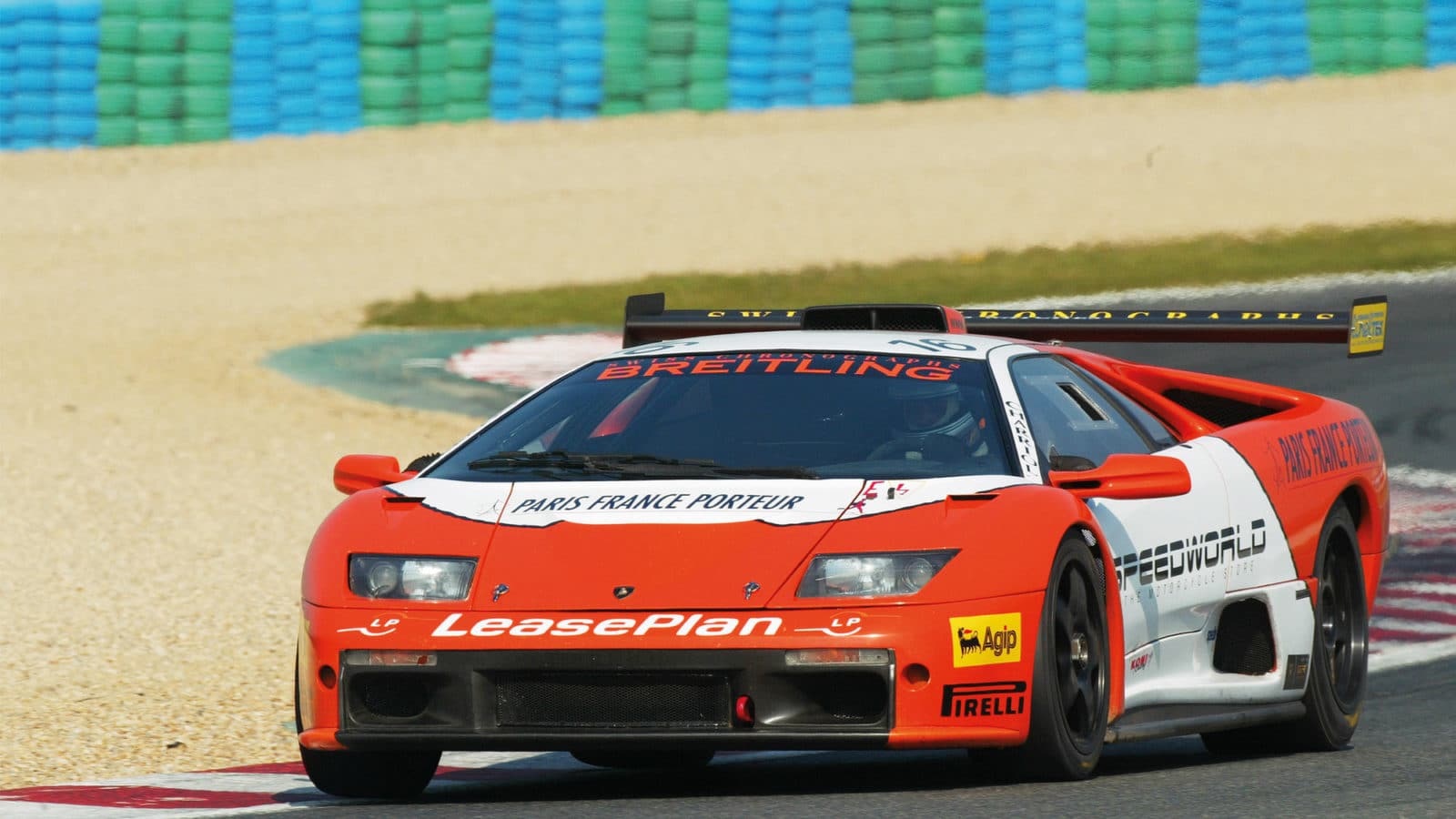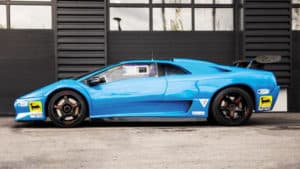Lamborghini Diablo SV-R: race car buying guide
Sometimes things go further than just a single-make series, says Robert Ladbrook. This racer sparked a sports car revolution

The Philippe Charriol SuperSport Trophy from 1996-2002 was Lamborghini’s first foray into a one-make racing series
François Flamand/DPPI
Some may try to lump the original Lamborghini Super Trophy into the same category as so many other run-of-the-mill single-make racing championships, but you shouldn’t. Porsche’s behemoth Carrera Cup notwithstanding, there isn’t anything else that can touch the Lamborghini Diablo SV-R in terms of the impact it had on global sports car racing.
By way of explanation, this is not only the granddaddy of modern GT3 cars, but also of modern GT3 racing. Without the Diablo Super Trophy in the mid-1990s, GT3 might never even have existed and, much like everything else in GT, it took the pioneering spirit of Stéphane Ratel to bring it to life.
Being only a few years into his career as a race organiser with first the faltering Venturi brand and then the smash-hit BPR Series for GT1 and GT2 machinery, Ratel was on the lookout for a new manufacturer partner come 1995 when Venturi killed off the Trophy. Cue a visit to Lamborghini in Sant’Agata, which at the time produced two and a half cars a day and was in need of an interest hike. The Countach had been retired, replaced by the Diablo as the flagship, and Ratel thought the time ideal to drag the company kicking and screaming into motor sport.
And he did so with a very clever plan. By partnering with finance firm LeasePlan France, Ratel came up with a simple package of selling a production-based supercar complete with everything needed to go racing, and condensing it all into a monthly payment across the year. To sell it further, customers even got a box of bits to make the cars road legal at the end of the plan, should they wish. The concept was to make racing accessible, and (within reason) affordable against the bespoke GT1s nobody but the factory itself could afford.
Lamborghini responded by uprating the Diablo all-round. Brakes were beefed, suspension stiffened, glass swapped for plastic and the 5.7-litre V12 breathed on to make 540bhp. In total Lambo reckoned it fitted some 250 new components to create the racing SV-R. By May 1996, a single test car was complete and just a month later Lamborghini sent five trucks with 28 cars aboard to the first race – running on the undercard of the Le Mans 24 Hours. Quite an entry, that… together with being the world’s only V12-powered single-make series.
Ratel and his SRO group used the Philippe Charriol SuperSport Trophy (to give it its full title) to hone the new production-based regulations that would become GT3 a decade later, to experiment with Pro-Am driver partnerships, to run mixed race formats of sprints and enduros, and to pilot both driver-grading and Balance of Performance. Lambo’s in-house racer was the test bed for everything GT racing is today.
A total of 32 Diablo SV-Rs were produced and the series ran from 1996-2002 before being replaced by the Super Trofeo we know today.
 One for sale
One for sale
1996 Lamborghini Diablo SV-R
Runner-up in the 1996 series and third in 1997; with a full restoration.
£401,100
Lamborghini Calgary, +1 403 984 6433
Lamborghini Diablo SV-R Super Trophy statistics
Price new N/A
Price now £400,000-£900,000
Engine 5.7-litre V12
Rivals Porsche 964 Carrera Cup, Ferrari 348 Challenge, TVR Tuscan Challenge
Verdict Aside from the Porsche, nothing comes close to the historical importance of the SV-R
 One for sale
One for sale